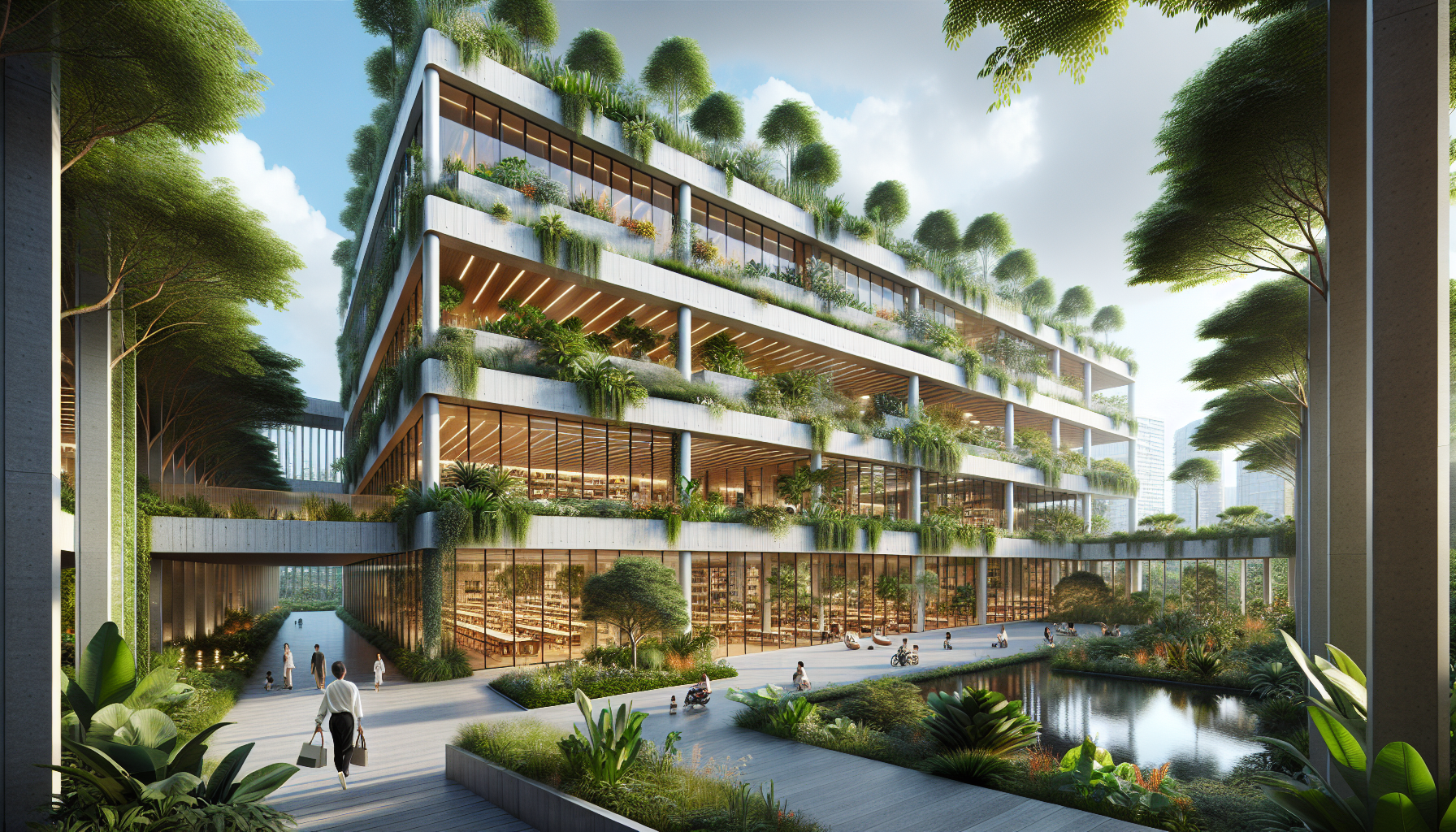Biophilic design is more than just an architectural style; it aims for more sustainable designs by attempting to reconnect people with their environment through the introduction of natural elements. This approach proves particularly beneficial in cities, where people spend a lot of time indoors, making it difficult for them to enjoy nature.
Biophilia, a term coined in the last decades of the 20th century, is defined as “the instinctive bond we experience with other forms of life.” This natural, deep-rooted, and universal affinity underscores the essential tie that connects us with the natural environment.
The rapid growth of urban areas has intensified the gap between humans and nature, creating a significant misalignment with the environment our species has adapted to throughout its evolution. This detachment potentially has adverse consequences for health, wellbeing, and the quality of life.
In response to this situation, biophilic design seeks to reintegrate elements of nature into architecture and interior design, going beyond merely adding plants and green areas. This approach aims to create environments that reflect an intrinsic connection with the natural world.
Although the incorporation of natural elements in predominantly humanized spaces may be perceived as a recent trend, the integration of nature into daily life is a millennia-old practice in human history.
Multiple studies show a correlation between contact with nature, both in outdoor and indoor environments, and improved health and wellbeing. These studies often focus on the impact of natural visual environments as a beneficial factor in physical and mental health, such as reducing stress.
One recurring element is beauty as a visually pleasing stimulus for the mind, since, despite being a subjective value, most people, regardless of their origin and culture, find natural stimuli especially beautiful: a sunset, the flight of a flock of birds, or a large forest are images commonly associated with pleasant experiences.
Indeed, it appears proven that the mere presence of plants in indoor environments can have positive effects on individuals’ performance, health, and wellbeing.
However, this way of understanding design and architecture goes much further than simply including plants in our homes or offices, as there are other key resources that can be used to establish that connection between the interior and nature.
Thus, biophilic design introduces elements that appeal to all our senses: sight, but also smell, hearing, and touch… to enjoy relaxing sounds, fresh smells, in open spaces that offer a visual connection with nature.
Here are the top 10 points for reconnecting an artificial environment with nature through biophilic design:
1. **Visual Connection with Nature:** Seek views of the outdoors, especially if natural environments such as gardens, forests, mountains, or water areas are observed. It’s also beneficial to design spaces for contemplation and rest like patios, terraces, or balconies.
2. **Integration of Vegetation:** Indoor plants and gardens not only purify the air but also add a touch of freshness, fragrance, and vitality to the rooms. Vertical gardens and terrariums that connect the interior with the exterior, creating continuity through design and architecture, are particularly interesting.
3. **Maximizing Natural Light:** Large windows and skylights allow an abundance of sunlight to enter, improving interior lighting and regulating the natural cycles of the house’s inhabitants. Atmospheric lighting should recreate a warm and relaxing ambiance, allowing residents to adjust the light according to their needs and moods.
4. **Natural Materials and Textures:** such as wood, stone, wool, and other natural elements in the construction and interior design of the house to create a sense of warmth and connection with nature, conveying authenticity to its occupants. The different textures—soft, rough, polished—will stimulate the senses, creating a sense of shelter.
5. **Organic Shapes and Patterns:** that reference figures or designs from nature with curved and imperfect shapes, both in buildings and in interior furnishings.
6. **Colors Inspired by Nature:** such as earth tones, ochres, and terracottas, but also vibrant like cobalt blue and emerald green that add dynamism and energy to the space depending on the rooms.
7. **Air Quality:** The layout of spaces should facilitate the circulation of natural air by taking advantage of natural currents to maintain a healthy environment. Temperature and humidity are subtle elements that we don’t see, but feel.
8. **Presence of Water:** Relaxing sound and cool environment, water can act as a balm evoking nature. Incorporate aquatic elements like fountains, ponds, or small waterfalls to create a unique and dynamic atmosphere.
9. **Recreating Natural Systems and Processes:** Flexibility and adaptation by designing versatile spaces that can meet the changing needs of residents depending on the seasons, allowing the integration of natural elements and modification of the environment according to individual preferences. Nature has order within chaos, and knowing how to recreate it is crucial to reconstructing the ambiance.
10. **Sustainability:** Incorporating sustainable practices and technologies in the design and construction of buildings such as energy efficiency, rainwater capture and reuse, or the use of recycled materials minimizes environmental impact and promotes a more environmentally friendly lifestyle.












